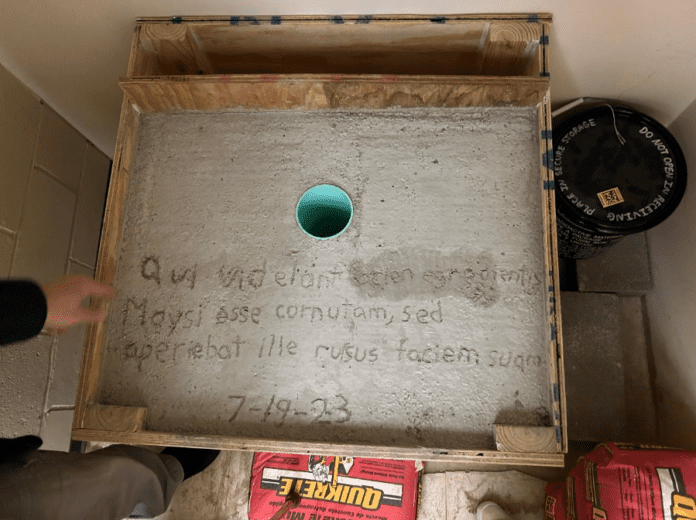
Two research students work with radiation and don’t turn into the Hulk
This past summer, a team at the University of Dallas consisting of Dr. David Catlett and two research students, Thomas Waterman, sophomore physics major, and Jaihan Utailawon, junior physics major, collaborated with Texas A&M and Cerium Labs for a research project.
Recruited by affiliate research professor Dr. Will Flanagan, Catlett’s experience working in the semiconductor industry made him perfect for running the UD section.
Catlett’s team created a scenario to bombard a SRAM – a computer memory chip – with neutrons and observe the effects. At the same time, Dr. Jacob Moldenhauer worked with a group of students at CERN to observe the time of flight in neutrons. Moldenhauer’s work contributed to the understanding of nuclear physics, while Catlett’s work focused on the computer industry.
The students worked to simulate the experiment using a program called GEANT-4. This allowed them to calculate overall radiation dosage and exposure and create a chamber to contain both the source, californium 252, and the experiment.
They constructed a box out of cement in the basement of HSC, ensuring no radiation escaped the area of experimentation. The goal was to test semiconductors for boron 10. Computers using this isotope are subject to disruption and self-fission upon encountering neutrons. This affects what materials can be used in computers used in space, for example.
The team studied the SRAM device while it was powered and storing data. Utailawon worked on programming the SRAM and Waterman designed the concrete chamber. This is a concrete block with a 6-inch tube inserted vertically in the top. A second tube intersects horizontally beneath this.
The exposure ports face a little used machine shop and a side wall of concrete, ensuring the safety of members of the university. The californium is dangled into the first tube on a string. The SRAM is placed beneath it in the second tube. When the 252Cf decomposes it releases 3-4 fast-moving neutrons. These neutrons entered the exposure port to encounter polyethylene. This plastic contains many hydrogen atoms that slow the neutrons. The now thermal neutrons then interact with the SRAM.
This interaction excites the 10B, becoming boron 11. As 11B relaxes, it produces lithium, helium, and excess energy in the form of gamma rays. Running the experiment with the chips powered allowed the group to understand how the functions of the SRAM continued or failed.
Catlett said, “Last summer was a ‘build-the-infrastructure’ summer and fortunately I had two outstanding students helping me.” To create the project, Catlett and his students visited UT Austin to see their nuclear reactor. This reactor uses uranium, almost impossible to melt down, and therefore very safe. Catlett said this trip was “personally really exciting.”
He intends to keep taking students to labs, going to CERN in March with Flanagan and five spring Romers.
This research can be continued using a High Purity Geranium Detector or be used as a neutron detector. With a HPGe, neutrons can bombard a sample of a metal. The gamma rays released will enter the HPGe. Each metal has a unique signature of gamma rays. By reading the HPGe, the type of metal can be determined. This is useful for testing old ink samples for copper, for example.
The continued expansion of this project opens a new discipline for Dr. Catlett and incredible opportunities for undergraduate research rarely seen elsewhere. Our physics department continues to impress and Catlett hopes to encourage new students to apply for summer research.